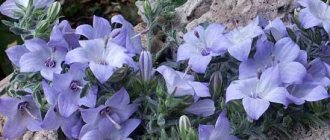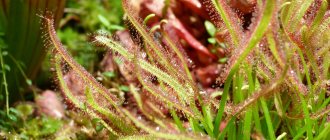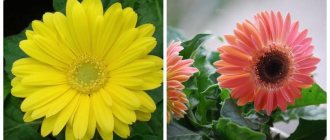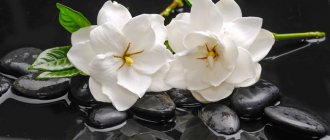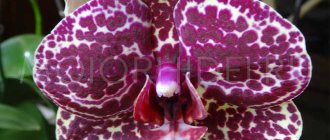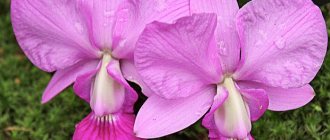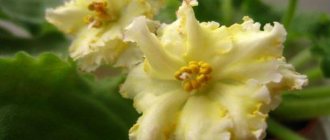Among the colossal variety of varieties of queens of the autumn garden, the Zembla chrysanthemum remains one of the most popular, especially among indoor flowers. Many people seek to purchase a potted and already blossoming specimen as a gift or for their home greenhouse. And few people know that this amazing flower feels great not only indoors, but also when grown in open ground.
What features does the Zembla chrysanthemum have?
Chrysanthemum is native to Southeast Asia.
The flower became widespread in Japan. People associate Japan with chrysanthemum and sakura. The name translates as golden flower or sun flower, due to the prevalence of yellow in the petals of any variety. The plant belongs to the Asteraceae or Compositae family. One of the months of the year in Chinese culture is named after a flower, so it is generally accepted that its cultivation began in this country. The plant became widespread among European countries in the 19th century thanks to the discovery of the Dutch. In Asian countries, the flower is used to brew teas. The beneficial properties of chrysanthemum have been known since ancient times. It helps fight migraines and also maintains the tone of the whole body. In the modern world, this flower is in second place after roses in popularity.
Chrysanthemums Santini
Aviso
Bright suns! Typically used as part of spectacular luscious compositions. An interesting option would be a combination of aviso chrysanthemum and matrikaniya.
Bouncer (Bouncer)
Chrysanthemum bouncer is similar to bacardi, but has smaller flowers and more delicate stems. It should be noted that all santini are often combined in one mix composition. In this case, the bouncer will be a bright, fresh island in a sea of bright positivity!
Kalimera
Kalimera is a very extravagant flower. Thanks to its shape, it is convenient to use for making flower toys. In addition, these flowers look great with other chrysanthemums, as well as in lush bouquets and even in miniature wedding bouquets, allowing you to precisely place color accents.
In total there are several thousand varieties of chrysanthemum. In this article we tried to describe the most popular options from our range. We have other chrysanthemums in stock, and a great variety of floral joys! Call!
Varieties
Chrysanthemum Zembla has the following most popular subspecies:
- Lilac. It has a large bud with wide petals, mostly light pink in color. The stem develops up to 90 cm in height. Tolerates winter in a flowerbed.
- White. So named due to its dazzling white petals. The large white crown has a greenish center.
- Yellow. Belongs to early varieties, characterized by very large buds up to 15 cm in diameter. Yellow chrysanthemum blooms already in September.
- Lime or Brazil. Bush chrysanthemum, distinguished by a combination of white and light green leaves and a lemon-green border.
- VIP. The hybrid has a small bush with a large number of double flowers. The petals are painted light pink, with the presence of purple and lilac inclusions.
- Purple. Characterized by large purple buds. Blooms for a long time.
- Pink. It is distinguished by its particularly long-lasting durability after being cut from the bush. It has huge flowers with pink petals.
Main varieties
Often the name of this flower contains the additional word “mix”. This is due to the fact that this variety includes several species that differ in the color of the buds. Let's look at the most popular subspecies.
Lilac
This subspecies belongs to the large-flowered species. Very large inflorescences with wide petals are formed on the stem. They are painted pink. The plant, which grows up to 90 cm in height, can easily winter in the garden.
White
This is also a large-flowered species that produces buds of unusual color. The main color of the petals is dazzling white. But sometimes their middle has greenish inclusions.
Yellow
This is an early variety that also forms fairly large inflorescences. They are spherical in shape and yellow in color. Active flowering occurs in September.
Lime
It is a bush plant. Its buds are characterized by an unusual color: the petals are white and light green, and at the edges they are painted in a greenish-lemon tint. Externally, the flowers are very similar to the Brasil subspecies.
VIP
This is a hybrid variety that looks like a compact bush. The plant forms many large and double inflorescences. The color of the petals here is also unusual: a soft pink background is divided by lilac-violet veins.
This type of chrysanthemum produces large purple buds. It has a long flowering period.
Pink
This plant is known for its beautiful large pink inflorescences. A distinctive feature of this species is the ability of cut buds to remain fresh for a long time.
Features of care
To grow a beautiful flower, you need to organize optimal conditions for it both in the house and in the garden bed.
Zembla chrysanthemum needs the following care:
- Watering is done 2-3 times a week. If the weather is hot outside, then it is necessary to spray the leaves with warm spring water;
- During the period of active plant growth (spring), the flower should be fertilized with complex mineral fertilizers. You can also feed chrysanthemums with potassium, nitrogen and phosphate fertilizers. During the flowering period it is better to apply potassium fertilizers, at the stage of bud formation - phosphate fertilizers, and for forcing the leaf mass - nitrogen fertilizers;
- To form a beautiful bush, it is necessary to pinch out young shoots. All dried leaves, as well as buds, must be removed so that they do not spoil the appearance of the flower;
- lighting should be good. The minimum duration of illumination is 5 hours per day. It is better not to place indoor varieties in direct sunlight;
- Chrysanthemum transplantation is carried out once every 2 years. In this case, each time you should choose a larger pot;
- When growing a flower in open ground, you should mulch the ground with leaves, sawdust or grass. This will retain moisture in the soil and reduce the frequency of watering.
When growing chrysanthemums in the garden, remember that this flower is susceptible to attacks by pathogenic microflora (for example, the causative agent of powdery mildew), as well as parasites (bugs, common aphids). Therefore, plantings must be periodically sprayed with protective solutions. After the flowering period is over, the bushes are cut off to the very root and placed in a dark place where the temperature is +10...+15 °C. The chrysanthemum should stay here for 30–40 days. During this dormant period, the plant will recover and form new shoots along with peduncles.
In general, caring for this variety is practically no different from other varieties. Therefore, this flower can be safely classified as an unpretentious species that successfully takes root both in a flower bed in the garden and on a sunny windowsill in an apartment. As you can see, caring for a garden or indoor Zembla chrysanthemum is not difficult. But with proper maintenance, this flower will delight you with beautiful and long-lasting flowering.
What features does the Zembla chrysanthemum have?
The Zembla chrysanthemum is popular among gardeners for growing in the garden, but some have had good success flowering in a pot. Therefore, a home series of the variety was cultivated.
Main distinctive features:
- Zembla is a variety of chrysanthemums with large spherical flowers. Bush garden chrysanthemum reaches a bud diameter of 10-25 depending on the variety; at home you can grow a flower up to 12 cm. Visually it looks like a branch of medium thickness, less than a meter high, with three buds.
- The period of active flowering occurs from the beginning of September to the end of autumn. Thanks to the thick and fairly elastic stem, once cut, the flowers can stand in water for up to weeks.
- Grown as single stems and bushes, it has a wide range of petal colors - from natural neutrals to bright ones. Most varieties have green central petals.
Bush chrysanthemums
Chrysanthemum Bakardy white
Bacardi are good because they have a strong stem, which makes them an excellent option for lush bouquets. The most common color is white. But there are also different variations - cream, yellow, pink.
Chrysanthemum zembla (or baltica) (Zembla)
Zembla is a chrysanthemum that comes in two varieties - bush and single-headed. In terms of color, the most common varieties are white, cream and yellow. Like bacardi, zembla are hardy, persistent plants, making them very practical.
Glossy
Glossy has an unusual coloring. It looks like a star with diverging rays with white splashes. Like most chrysanthemums, glossy has a pleasant herbaceous aroma and stands well in water - up to twenty days.
Jordi
Geordies are very similar to glossies, but at the same time even brighter and more positive! These flowers look great in arrangements in baskets, creating an indescribable summer mood!
Mona Lisa
Beautiful name and beautiful flower! It has all the wonderful properties of chrysanthemums in terms of durability, aroma and, of course, price. The Mona Lisa chrysanthemum looks very romantic, however, a photo of a chrysanthemum will say better than a hundred words!
Chrysanthemum Zembla: features, care, photos
How to care for Zembla chrysanthemum? This variety does not require any special care. At home, care and maintenance are carried out in the same way as for any other variety of chrysanthemums.
- The soil must have good drainage.
- It is recommended to provide the flowers with bright sunlight, at least 5 hours a day. However, in direct midday bright sunlight, plants feel uncomfortable.
- Planting is done in the spring after all frosts, so that the fresh sprout does not die from hypothermia.
- Choose an area that is reliably protected from the wind.
When a flower grows, it is convenient to fence it. As the greenery blooms and grows, external supports will be invisible and will not spoil the beauty of the blossoming buds.
How to preserve chrysanthemums in winter?
In winter, the chrysanthemum should rest and gain strength before the new growing season. You can overwinter the plant: 1.
In a bright, cool room (on the veranda, insulated balcony, in the entrance)
After flowering, the potted chrysanthemum is cut to 10-15 cm and placed in a cool, bright room for the winter. The optimal temperature is 3-8°C.
Water the plant rarely, only after the clod of earth has dried out on 2 phalanges of the finger. Typically, watering is required once a month. 2. At home
If there is no cool room, the chrysanthemum can remain on the windowsill in the house in winter.
In this case, the plant is pruned minimally, with the obligatory removal of faded buds, dry branches and leaves. Watering is carried out in the same way as during the growing season. To overwinter chrysanthemums in a pot, you should choose the lightest and coldest window sill in the house 3.
In the basement
Chrysanthemums can be placed in the basement for the winter. This method is very popular among owners of garden heat-loving chrysanthemums, and therefore is quite suitable for their potted counterparts.
To prepare the plant for wintering, all dried branches, flowers, and rotten parts are cut off. The bush is trimmed to a height of 10-15 cm. A couple of days before the start of wintering, the soil in the pot should be watered.
By the time the chrysanthemum is placed in the basement, the soil should be slightly damp, but not damp. 4. In the open ground
Some varieties of potted chrysanthemums are able to overwinter in the ground with shelter. Another thing is that it is very difficult to guess whether a particular specimen will overwinter.
This is interesting: Characteristics and features of the Citron Magaracha grape variety: rules for its cultivation
If you decide to take the risk, with the onset of the first frost, cut the chrysanthemum stems to a height of 10 cm and cover them with dry soil, peat or dry leaves. On top - cover with film or other covering material.
Reproduction and feeding
You can cultivate the plant in the following ways:
- Seedlings (pre-planting seeds).
- Cutting. Shoots taken from a bouquet take root easily.
- Root division. To do this, dig up a bush, divide it into several necessary parts and replant it.
Root division is used not only as a propagation method, but is also recommended several times a year to ensure lush flowering and development of large buds.
It is preferable to use nitrogen fertilizers for greenery; phosphate fertilizers have a positive effect on the development of buds; potassium fertilizers must be used during the flowering period.
Reproduction
Chrysanthemums are propagated by dividing the bush or cuttings.
It is best to divide the bush in the spring. This should be done approximately once every three to four years. It is dug up carefully so as not to damage the roots. Divide into separate branches and plant. If everything is done correctly, the divisions will quickly take root and will produce their first flowering in the same year.
Cuttings can be carried out all year round, but are especially effective in spring or early summer. Cuttings are cut about 10 centimeters long from shoots with green, unhardened bark. The lower leaves are removed from them and placed in water, or planted under a film, subject to abundant watering. The cuttings take root within a couple of weeks.
When purchasing chrysanthemums for planting as seedlings (at the beginning or end of May) or rooted cuttings for subsequent growing (March-April), special attention should be paid to information about the conditions in which the planting material was grown. Even the most beautiful greenhouse seedlings or cuttings will not give the expected result in open ground. It is better to give preference to nondescript, hardened specimens.
You can grow this flower from seeds - a method for those who are not looking for easy ways. Seeds are collected from dried flowers, and sowing begins in early spring. Naturally, this can only be done in greenhouse conditions. Sow the seeds on top of moist soil and leave in the light. Sprouts will appear in about ten days. When they get stronger, it will be possible to move them to open ground. At first, young shoots should be shaded with agrofibre. In the first year of the growing season, such chrysanthemums will not bloom, but if single flowers appear, they must be removed.
Features of a houseplant
If you decide to plant the annual Zembla chrysanthemum in a pot on the windowsill, then you do not have to throw it away after the end of the flowering period; by following simple steps you can save the flower for next year. Cut off the shoots to short cuttings and place the pot in a dark place with a temperature of about 3 degrees Celsius. In the spring, you need to get a pot and transplant the shoots into new soil. For lush flowering and good growth, the plant will need to be fertilized once every two weeks. New plants are planted using cuttings from shoots from the pot.
Landing
The soil in flower beds for chrysanthemums needs to be prepared in advance: if it is heavy, clayey, add sand, humus, peat, you can measure it in buckets, take everything in equal parts. If the soil is light sandy, add loam, turf soil and humus. Peat soils require serious improvement - they are poor and acidic; loam or turf soil and humus must be added.
All components added to improve the soil must be mixed well. The fertile soil layer should be less than 40 cm.
If you have a plot in a lowland or on a slope, before filling the flower beds, add a layer of crushed stone drainage to the bottom of the trench.
Another important indicator of soil quality that you should pay attention to when planting chrysanthemums is acidity. Changes in acidity or alkalinity can seriously limit plant growth, weaken the root system and even lead to death
Chrysanthemums prefer an acidity of about 6.5, absolutely not lower than 6.2. To increase the pH of the soil, you need to lime the soil, and to lower it (on saline soil) add iron sulfate or aluminum sulfate.
For deoxidizing soil for chrysanthemums, dolomitic limestone is preferred because it contains magnesium and other minor amounts of nutrients. Slaked lime is not desirable - it very quickly reacts with a change in acidity and, when combined with mineral fertilizers, blocks available phosphorus.
We plant chrysanthemums obtained from dividing an old bush, container chrysanthemums purchased at a nursery, or rooted cuttings in rows depending on the size of the bushes: at a distance of 20-30 cm from each other for low-growing and medium-growing varieties, 45-50 cm for large-growing varieties.
Description of the plant
This is a perennial (many people prefer to cultivate Zembla as an annual) herbaceous plant and belongs to the family Asteraceae or Compositae, the second name.
Literally translated it means “golden-flowered”, “sun flower” - since the yellow color of the inflorescences is the most common among all types of chrysanthemums.
According to one of the many legends, when a dragon got burned while trying to steal the sun from a man, he flew into a rage and began to torment him, tearing apart a fireball, and the sparks falling to the ground became solar flowers.
It is believed that the Chinese were the first to cultivate this plant, naming their ninth month of the year after it.
And only later did the Japanese become so interested in it that the flower became part of their culture. Their admiration for this charming flower manifests itself in different areas of life; they literally idolize it. Thus, he became their national symbol, his image was allowed to be worn on clothes only by members of the imperial family (whose veneration is a special topic of conversation), the highest award of this country is named after him, and an annual holiday is held in his honor.
The Dutch discovered the chrysanthemum to Europe at the turn of the seventeenth and eighteenth centuries, but it took another century for it to become widespread. And only in the nineteenth century it became a common crop in European gardens.
In China and Japan, chrysanthemum flowers are used as food, but most often they serve as additives when brewing tea. This tea loses its astringency, acquires a soft floral taste, it tones the entire body and relieves headaches.
Chrysanthemum today is everyone’s favorite flower and in garden cultivation it is second only to roses in popularity.
How to care for a plant
In order for the Zembla chrysanthemum to grow normally and delight you with its flowering, you should follow several important rules for caring for it. The main ones are listed below.
Watering rules and humidity
One of the main rules for caring for chrysanthemums in the garden is proper watering. The flower is very demanding of soil moisture, but excessive moisture can cause the death of the plant.
This equally applies to soil drying out. To reduce the likelihood of rapid evaporation of moisture, it is recommended to mulch the top layer in the root zone of the flower with peat.
Fertilizing and soil quality
It is also imperative to fertilize the plant. It is the main component in the rules of care.
Fertilizers are applied in the following order:
- In spring and early summer it is necessary to use complex mineral fertilizers. They need to be used twice a month.
- From the moment the chrysanthemum begins to form buds, it needs to be fed with potassium fertilizers.
As for the soil, it should be well-drained and have an average acidity level.
Pruning and replanting
In order for the Zembla bush chrysanthemum to form new shoots, it is recommended to pinch the tops. This will allow the bush to form, and accordingly there will be more buds on it. Be sure to remove faded flowers and dried leaves.
The plant must be replanted annually for the first five years. In all subsequent years, the chrysanthemum can be replanted at least every 2-3 years.
Wintering a flower
If the flower grows in open ground, then before the onset of frost the plant must be cut to the ground, and then dug up with a clod of earth. Then the chrysanthemum root should be placed in a room where the air temperature is kept at +10 ° C and there is no access to sunlight.
You can also dig up a chrysanthemum bush from the street before frosty weather sets in and transplant it into a flowerpot.
It is important to know! If the chrysanthemum is grown as a houseplant, then after flowering it needs to be cut off the branches to the base, and the pot with the flower should be placed in a room where it will be approximately +10 degrees. It is important that it is not exposed to sunlight until spring.
Characteristics of the Zembla chrysanthemum
This is one of the most popular varieties of garden chrysanthemums among gardeners, although some cultivate it as a houseplant.
The Zembla potted series is extremely popular.
- Zembla is a flower in the form of large (10-25 centimeters in diameter, up to 12 cm in pots and indoors) spherical buds. In gardens you will often see its popular version with three open flowers on one long (80-90 cm) branch.
- This chrysanthemum blooms in autumn (from September). When cut, the flowers last a long time - about three weeks, since they have a stable, strong and elastic stem.
- Cultivated as bushes and single flowers, with a wide range of colors - naturally yellow, but also orange, white, pink, cream. It is not uncommon for Zembla to have greenish petals in the center of the inflorescence.
Characteristics of the variety and its subspecies
Chrysanthemum Zembla Mix begins to bloom in early autumn. Garden chrysanthemums have large inflorescences, reaching a diameter of up to 25 cm. They are most often single, but there are also three buds on one high (90 cm) shoot. Potted crops will be slightly smaller - up to a maximum of 12 cm in diameter.
Since the chrysanthemum has a strong stem, after cutting the flowers can stand in a bouquet for up to three weeks.
The most famous following varieties of Zembla Mix chrysanthemum:
- Chrysanthemum Zembla Lilac. Belongs to large-flowered chrysanthemums.
- Chrysanthemum Zembla White. The flower of this variety is large and dazzling white, sometimes with a greenish center.
- Chrysanthemum Zembla Yellow. It is an early variety and blooms with large (up to 15 cm in diameter) yellow ball-shaped inflorescences already in September.
- Chrysanthemum Zembla Lime. A bushy plant, it has an unusual color: the white-light green petals along the edges are painted in a lemon-greenish color.
- Chrysanthemum Zembla VIP. This is a hybrid variety that is characterized by a compact bush and many large double inflorescences. Chrysanthemum Zembla Purple. It has large flowers of appropriate color with a long flowering period.
- Chrysanthemum Zembla Pink. It has gorgeous large pink flowers and has the ability to maintain freshness for a long time after cutting.
Chrysanthemum Zembla Brazil
It is distinguished by light yellow inflorescences, the edges of the petals are pale green.
Chrysanthemum Zembla Lime
It is characterized by snow-white petals with light green edges, which are located on the outer circumference. In the center the petals are colored light green.
Chrysanthemum Zembla VIP
According to the description, the shape of the flowers does not differ from other varieties, but the colors are completely different. The petals are painted in a blurry delicate lilac color.
Chrysanthemum Zembla White
The petals are larger than those of other varieties. The inflorescences are painted in a solid, uniform white shade, in honor of which the variety got its name - White. The leaf blades are dark green.
Chrysanthemum Zembla Lilac
The inflorescences are painted in a light delicate purple color. The petals are slightly concave towards the center.
Chrysanthemum Zembla Yellow and others
Zembla Yellow is absolutely identical to Zembla White, the only difference is the color of the buds. They have a uniform yellow color.
There are other little-known Zembla chrysanthemum varieties that are definitely worth checking out:
- Purple - petals of a rich purple hue;
- Pink - the flowers have a beautiful light pink color.
Caring for the Zembla chrysanthemum
The Zembla chrysanthemum requires the same care as other common chrysanthemum varieties.
No special requests regarding soil:
- Good drainage and generous lighting are desirable - chrysanthemums love the sun (at least 5 hours a day), although in the indoor version, direct exposure to the rays of the midday sun should be avoided.
- You need to plant a flower at that time of spring, when the danger of frost has passed and the emerging seedlings will not be threatened by hypothermia, and in a place where there is no room for the wind to run wild.
- As an option, many use supports to support or fencing flower beds with chrysanthemums (for example, in the form of pegs connected with wire). They also use special nets around individual bushes, which become practically invisible against the background of a blooming bush.
Timing for planting chrysanthemums in open ground
Chrysanthemums are preferably planted in spring. The earth should warm up to a depth of 15-20 centimeters to 12-14°C. In the Moscow region, central regions and Siberia, the time for planting chrysanthemum seedlings occurs in the first days of June. In the south of Russia this is done in early April, after the cessation of recurrent frosts. For spring planting procedures, it is better to choose a cloudy, cool day.
In autumn, it is recommended to plant until the end of September (in the south until mid-October), while the air temperature is not lower than 15-10 C.
If the autumn planting period is missed, you can plant a cutting of the plant you like in a container and, when it takes root, place it in a cool, dark place. It will definitely arrive in the spring.
Preparing the site for planting
It is important to choose a suitable location for these flowers. It should be well warmed up by the sun and protected from drafts; they won’t even like partial shade.
Chrysanthemums need soil that is fertile and rich in organic matter. Slightly decomposed high-moor peat, plant remains or rotted compost will come in handy as a nutritious mulch. The acid balance should be neutral or slightly acidic. The ideal option is light sandy loam soil, but some gardeners achieve good results on loamy soil.
Chrysanthemums cannot tolerate stagnation of water - their roots rot. Therefore, it is important to consider the drainage of the flower bed. For better moisture removal, you can add coarse river sand to the soil. Box beds raised above the ground are a good solution for these flowers.
They grow successfully in one place for up to five years. But they need to be returned to the old flowerbed only after two or three years.
Legumes, perennial herbs, and other garden plants with an annual development cycle are suitable as predecessors for them. It is better not to plant chrysanthemums after flowers from the aster family, as well as nightshade plants.
You should prepare the area for planting in advance:
- in the fall it is dug to the depth of a spade bayonet;
- apply mineral fertilizers - superphosphate and potassium salt at the rate of 50 g and 30 g per square meter;
- if required, the soil is limed with chalk or its acidity is reduced with wood ash;
- for the winter, the bed can be covered with a layer of foliage, which is dug up along with the soil in the spring;
- In the spring, the site is subjected to secondary digging with the addition of humus; some gardeners simply pour it portionwise into ready-made holes.
How to plant chrysanthemums correctly
Chrysanthemums have a powerful root system that branches well and goes to a considerable depth. When planting, they should not be thickened.
The distance between bushes depends on the variety:
- low-growing border varieties are planted at a distance of about 30 centimeters from each other;
- 40 centimeters distance for flowers of medium height;
- For tall varieties, a distance of half a meter will be required, otherwise they will oppress each other.
A few hours before planting, water the seedlings in the pot abundantly so that it is easy to transfer the rhizome along with the lump of earth.
Flowers are planted in separate holes with a depth of 25 to 40 centimeters, depending on the variety and size of the seedling. The root collar should not be buried more than two centimeters. It is optimal that the base of the seedling root stem is at the same level as in the pot.
After planting, the flowers are watered abundantly, the soil is compacted, and the watering area is sprinkled with a thin layer of humus and covered with non-woven material for several days, protecting from sunlight. Tall stems are tied to pegs made of pine trees with natural rope - twine or hemp.
To provide chrysanthemums with better lighting when planting, they maintain a checkerboard pattern.
Peculiarities of reproduction and feeding
- Seeds (for seedlings),
- By cuttings: even a shoot from a bouquet, when planted in the soil, easily takes root and soon delights with the appearance of leaves,
- By division: the bush dug out in the spring is divided into parts with roots and replanted separately.
Experts recommend planting (dividing) Zembla bushes every three years, as this ensures the splendor of strong flowering.
Recommended fertilizers:
- Nitrogen (for leaf mass),
- Phosphate (for the formation of buds)
- Potassium (during the flowering period).
- Chrysanthemum Zembla as a houseplant
If you have an indoor Zembla chrysanthemum, which is usually cultivated as an annual and is disposed of after flowering, but you want to save it, then you need to do the following. Trim the faded shoots to short cuttings and for the winter place the chrysanthemum pot in a cool, even cold place (you need a temperature of about 3 degrees Celsius) without bright light. In the spring, return the young shoots to a warm and bright room by replanting them in fresh potting soil and fertilizing them twice a month.
You can also plant new plants by cuttings from overwintered shoots.
Methods of propagation of chrysanthemum indicum
The method of propagation of the crop is chosen by the gardener individually. The seed method and cuttings are used.
Growing from seeds
For propagation, it is necessary to first grow seedlings. The following list of actions is performed:
- At the beginning of March, it is necessary to prepare containers for seedlings and fill them with a nutrient mixture. Ready-made substrate can be used. However, many gardeners prepare the soil mixture themselves. To do this, mix in equal parts: turf soil, humus and peat.
- The prepared soil must be disinfected with a light solution of manganese or exposed to low temperature (frozen).
- Place the seeds on top of the soil and water with warm water using a spray bottle.
- Cover with glass and place on the windowsill.
Growing a crop from seeds
Shoots will appear in 2 weeks. In some cases, it is recommended to use a fluorescent lamp. Since the seed of the crop is small, the beds are planted densely. After the emergence of seedlings, it is necessary to thin out the beds, leaving stronger specimens.
Important! Seeds can be planted in open ground; such planting takes place in mid-May. However, often such seedlings begin to bloom only the next year.
Rooting cuttings
This method is used very often. For propagation at the beginning of summer, it is necessary to cut the chrysanthemum shoot into cuttings 15 cm long. Place in Kornevin for 2 hours and plant in open ground.
Cover with cut plastic bottles on top. In hot weather, regularly ventilate and care for the cuttings. Observe daily watering. In the fall, transplant the cuttings into a pot and store them in a cool place.
Chrysanthemum cuttings
Plant diseases and pests
Chrysanthemum Zembla can be affected by such misfortunes as:
- Fungal diseases. The main reason is non-compliance with the rules of agricultural technology, overgrowing of the area with other plants. Types of fungi - gray rot (the stems of diseased plants become covered with a gray fluffy coating, which spreads to the flowers and leads to the death of the plant), downy mildew (the leaves become covered with a white powdery coating and die), black spot (the affected plant gets brown spots on the leaves, after which the leaves fall off) and verticillium wilt (through the roots the fungus enters the leaves, which turn yellow and die).
Features of plant flowering
With proper care and favorable conditions, Zembla blooms profusely and colorfully with large flowers.
Zembla chrysanthemum blooming
Period of activity and rest
Chrysanthemums begin to bloom in early autumn, and flowers cut for a bouquet can survive in water for almost a month. After all the buds have faded, the plant goes dormant until early spring.
Types and shape of flowers
Most varieties of Zembla chrysanthemum have yellow petals, but flowers with lilac, white, pink or purple flowers are also found. The petals are shaped like small tongues, they are densely spaced and form large inflorescences up to 20 centimeters in diameter.
Description of culture
The plant is a perennial, but is grown as an annual bush flower. It is used to decorate alpine slides, flower beds, flower beds, window sills and balconies.
The Zembla bush chrysanthemum, grown in open ground, can reach a height of 100 cm. If it is grown as a potted plant, the height can range from 11 to 25 cm.
On one stem there are up to 3 flowers, the reed petals of which are collected into a rosette inflorescence. The diameter of each flower can be from 25 (when grown in the garden) to 12 cm (if the plant grows in a pot). You can find flowers of completely different colors, from which a pleasant aroma of honey emanates.
The root system of the sponge type is located close to the soil surface. The stems bear pinnate, trifoliate, dark green leaves, the upper plate of which is covered with delicate hair.
When cultivated in garden conditions, the single-headed Zembla chrysanthemum enters the flowering phase from mid-September. It continues until stable frosts occur.
Growing bush chrysanthemum Zembla mix in the garden
Chrysanthemums are heat-loving and light-loving flowers, so when growing, you should pay special attention to this.
Growing a flower in open ground in a garden plot
Selecting a location
Chrysanthemums are especially sensitive to lack of natural light. A sunny hourly day should not be shorter than 6 hours. Therefore, you should carefully choose a landing site. It should be well lit, but at the same time should not be very open.
How to prepare the soil and flower for planting
To plant flowers, the soil is prepared in advance with a special soil mixture consisting of loose turf soil, compost, river sand and peat. Drainage material is prepared separately; it can be small pebbles, expanded clay or brick chips.
Plant varieties
The prefix “mix” is often used along with the name of this beautiful flower. The reason for this is that there are a large number of known subspecies of the Zembla chrysanthemum. Among the most common among gardeners are the following:
- Lilac is a large-flowered plant whose inflorescences have wide pink petals. Its height reaches 90 - 100 cm. It has the ability to winter in open ground.
- White. Also known as the Zembla White chrysanthemum. Large white flowers are formed on the stem, the middle of which is painted a soft light green color. The stems of the plant are strong and erect.
Varieties and varieties of garden chrysanthemums
Garden chrysanthemum is a perennial plant, the height of which depends on the variety and can vary from 15 to 150 cm. Currently, a huge number of varieties of chrysanthemums are known, which, according to some characteristics and characteristics, are combined into groups.
Size of inflorescences
Perennial chrysanthemums are divided into three groups based on the diameter of their flowers:
- small-flowered;
- medium-flowered;
- grandiflora.
Small-flowered or Korean plants can be either simple or double. A significant number of inflorescences grow on one bush with a flower diameter from 2 to 10 cm. The bushes themselves can reach a height of 25 to 120 cm. The leaves of the plant are very reminiscent of the shape of oak leaves. Flowers stand out for their frost resistance, are unpretentious to the composition of the soil and are easy to care for. Their flowering begins in mid-September and continues until frost.
Medium-flowered or decorative chrysanthemums can be grown not only to decorate the garden, but also for cutting. They also grow well in pots at home. They can decorate balconies, loggias and terraces. Ornamental bushes grow in height from 30 to 70 cm, and have a flower diameter from 10 to 18 cm.
Large-flowered chrysanthemums are spectacular tall plants. The length of their stem can reach from 80 to 120 cm in height. They bloom with large flowers with a diameter of 10 to 25 cm. This type of chrysanthemum does not tolerate frost well. Only certain varieties of it can winter in open ground. These flowers are mainly intended for cutting into bouquets.
Shape and height of the bush
According to the shape and height of the bush, garden chrysanthemums are divided into three types, each of which has many varieties.
Tall. The stems of this type of garden chrysanthemum can be quite tall and require support in the form of frames, metal mesh or wooden pegs. Supports are installed during planting of bushes. Plants planted in a group can be used as a hedge. The most popular varieties of tall garden chrysanthemums are:
- “Amber Lady” - the plant is distinguished by inflorescences of a golden hue.
- “Umka” - chrysanthemums with white flowers, the shape of which resembles a pompom.
- "Rosetta's Daughter" is strewn with flat inflorescences with flowers in pink and white shades.
Medium height. Bushes growing from 30 to 50 cm look very impressive both in a flower bed and along paths, fences, and gazebos. With their help, you can realize all kinds of design fantasies. The best varieties of medium-sized garden chrysanthemums are:
- “Zorka” - the plant stands out for its yellow-brown color, which just suits the autumn mood.
- “Dune” is a truly magical variety, the flowers of which can change color during flowering. They bloom yellow-brown, and after a few days they turn yellow-gold.
- “Lily” will help add brightness to any composition with its dark crimson flowers.
Borders. Small plants grow up to only 30 cm in height. This type of chrysanthemum is considered one of the most beautiful garden flowers. Border chrysanthemum bushes have the shape of a ball strewn with small flowers. The most popular varieties in this group are:
- "Varvara" is a plant with delicate lilac-lilac flowers.
- “Evening Lights” - the variety stands out for its scarlet inflorescences, which resemble festive fireworks.
- “Talisman” is strewn with bright beetroot-raspberry flowers.
Flower shape
Garden chrysanthemums have five different types of flower shapes:
- Pom pom flowers are an assembly of reeds that are gathered into a ball resembling a pom pom.
- Anemoid flowers consist of large petals, which are arranged in one, two or three rows. The flowers themselves are small in size and very similar to anemone flowers.
- Single-row and double-row inflorescences are bordered by flowers similar to reeds. In the center of such inflorescences small tube flowers grow. The border of flowers can be arranged in one or two rows.
- Semi-double flowers consist of three rows of reeds that are arranged around a central flower.
- Double inflorescences are similar to semi-double ones, but their flowers are more lush, as they are different in appearance and shape.
Growing conditions and care
Chrysanthemum Zembla is a light-loving plant that loves warmth. If you do not provide the flower with sufficient lighting, the shoots will quickly stretch out and the flowering period will be very short. It is possible that a plant located in a poorly lit place will not bloom at all.
Timely and abundant flowering occurs only if the soil under the plant is always moist. When overwatered, the root system may begin to rot, causing the flower to disappear. If the chrysanthemum is grown in a pot, there is a need to equip a functional drainage system.
To prevent the soil from drying out for a long time, experienced gardeners mulch it. For this, sawdust or dry grass is used.
Important! The flower responds well to evening and morning spraying of buds and inflorescences.
To grow Zembla chrysanthemum, you need to first prepare the soil. Its composition should include peat, river sand and turf-deciduous soil. To ensure water permeability and good aeration of the soil, it is recommended to add fine brick chips to it.
Abundant flowering can be achieved if the soil is fertilized in a timely manner. During the period of active spring growth, mineral fertilizers are mainly used. When the plant forms buds and blooms, it is better to use nitrogen and potassium fertilizers.
Important! Chrysanthemums need to be fertilized carefully. This is due to the fact that its root system is very sensitive to thermal burns.
To form young shoots, the plant must be pinched. Inflorescences that have already bloomed are removed. You must also ensure that there are no dry leaves on the bush. Trimming the top of the bush promotes its rapid growth. If you remove the first bud, you can later get inflorescences of a larger diameter.
In warm weather, homemade chrysanthemums in pots can be taken outside, but not in direct sunlight. This can cause the leaves to dry out and the buds and inflorescences to wilt.
After the plant has flowered, the bush is cut off at the root. For the winter, the chrysanthemum should be placed in a room where the air temperature does not exceed 10°C. Thanks to this, the flower will have the strength to form new stems and peduncles.
In spring, the plant with young stems and leaves is transplanted into new soil. This procedure is carried out annually for the first 5 years. After this time, transplantation is carried out once every 2 years.
Another option is to transplant the garden chrysanthemum into a pot with the onset of cold weather and bring it home. For a long time it will delight everyone with its beautiful flowers.
The Zembla chrysanthemum can be propagated in several ways:
The cutting propagation method is considered the simplest and most effective. To do this, just take a twig from a bush or bouquet and plant it in the soil to a depth of 1.5 - 2 cm. It is better to cover the cuttings planted in this way with a transparent jar. With proper watering and lighting, in a few weeks young leaves will appear on it, and the root system will begin to actively develop.
If the choice fell on propagation by dividing the bush, for this the plant needs to be dug up and divided into several parts. Each of them is transplanted to a new place. This procedure is best carried out in early spring. In the same year you can expect the appearance of flower stalks.
Growing
Green chrysanthemum can be grown and propagated in three ways:
- seed material;
- cuttings;
- dividing the bush.
When propagating chrysanthemums by cuttings, you first need to separate the strongest side shoot of an adult plant, after which it is planted in open ground.
You can also purchase an already rooted shoot in a specialized store. In this case, it is simply planted in the ground. It is recommended to do this in the spring.
If you want to propagate chrysanthemum by dividing the bush, then you need to divide the plant into 2-3 parts (depending on how thick it is). They are planted in open ground.
Green chrysanthemum requires compliance with certain maintenance rules. This flower does not tolerate waterlogged soil. The plant should not be watered too much. If you plant it in a container, then be sure to place drainage at the bottom. Otherwise, it may become infected with a fungus, or various pests may appear on the flowers.
In mid-summer, you should water the flower abundantly at the root. This should be done with warm water. There should be at least 4-5 liters per bush.
At the end of summer and early autumn, as the chrysanthemum begins to bloom, watering should be reduced to 2 or 3 liters of water per bush. In mid-autumn, moistening the soil should only be done if the weather is too warm and dry.
Don't forget about loosening and mulching. The soil is loosened next to the flower every 10-12 days. The second procedure should be carried out in early spring and autumn before covering the plant for the winter. For this, humus and peat are used.
In small-flowered varieties, before the first frost, the entire above-ground part should be cut off at ground level. The remaining root system of the plant should be covered with spruce needles, straw or spruce branches.
Bush chrysanthemums should be pruned periodically. This will make the plant as lush and voluminous as possible. It is worth cutting off the tops of the bushes. It is necessary to remove all damaged and old branches. This will prevent the development of various diseases.
It is also necessary to fertilize the bushes regularly. Feeding should be selected depending on the time of year. In summer and spring, it is better to use compounds with nitrogen. They will activate the growth of the flower.
At the end of summer, you can fertilize the chrysanthemum with compounds containing potassium and phosphorus. They promote abundant flowering. In the autumn, nitrogen fertilizers should not be applied, because they can cause the shrub to grow without flowers.
Sometimes small worms appear on green chrysanthemums, resulting in white spots on the leaves. In this case, all damaged plants should be collected and burned immediately. As a preventive measure, you can use the Phosfamide solution.
Chrysanthemums are often affected by gray rot, rust, and various viral diseases. They lead to damage to leaf blades and root systems. In this case, the flower should be treated with Actellik, Calypso, and Aktara.
Pests and diseases
Chrysanthemum Zembla is susceptible to infection with fungal and viral diseases. Among the most common are the following:
- Viral (mosaic, aspermia, dwarfism). Characteristic signs of diseases are that the leaf blades become covered with small brown spots, and the leaves themselves dry out and fall off; often the size of the inflorescences can be very small. The cause of these ailments can be poor ventilation of the room or too much watering. To combat viral diseases, it is recommended to remove the affected areas of the stems and leaves, and spray the bush with a solution of foundation or copper oxychloride.
As for the pests that threaten the Zembla chrysanthemum, the most dangerous of them are thrips and red spider mites, which spread on the stem and leaves, sucking the plant's juice. To destroy them, you can use the method of spraying with insecticides.
Proper care will extend the period during which the Zembla chrysanthemum will delight everyone with its beautiful and amazing flowers.
How to grow chrysanthemum correctly?
Everyone wants to grow a beautiful chrysanthemum in their garden. To do this, it is useful to know how this plant reproduces, how bush chrysanthemums are planted, and what care for them involves.
It is important to take into account the characteristics of the variety
Methods of culture propagation
The crop can propagate in three ways: seeds, cuttings and by dividing the bush. The procedure depends on the chosen method. Even if the gardener has no experience in planting chrysanthemums, there is no need to worry. After all, the flower is very unpretentious and easy to grow.
Growing chrysanthemum seedlings
After all, the resulting specimens will not be completely similar to the chrysanthemums from which the seed was taken. Seeds are sown between January and February.
To obtain high-quality chrysanthemum seedlings, you should follow these steps:
- Select a container for planting. Buy ready-made soil or prepare a mixture of peat and humus yourself.
- Place a drainage layer of broken brick, gravel or expanded clay on the bottom of the box. This will avoid waterlogging of the soil during irrigation.
- Fill the container with soil.
- Sowing seeds. A lot depends on the chosen variety. If the crop is annual, then the seeds must be sprinkled with a 0.5-centimeter layer of soil on top. But perennials will only need to be lightly pressed to the surface.
- Cover with plastic wrap or glass. Place in a well-lit place.
- Organize proper care. The speed of emergence of seedlings and their quality depend on this. The optimal room temperature is +24 degrees. Periodically, seedlings should be ventilated and sprayed with settled warm water. With good maintenance, the first shoots will appear after 1.5-2 weeks. From now on, you will need to accustom chrysanthemums to the open air. If the crop has grown greatly, pick it. After just 1.5 months, the young plant will reach a height of 20 centimeters and can be transferred to the garden.
Planting seedlings in a garden plot
Seedlings of annual plants are transferred to open ground in May, and perennial varieties are transplanted in early June. It is advisable to choose a place on the site that is well lit and protected from the wind. Chrysanthemum loves slightly acidic, well-drained soils.
The landing algorithm is as follows. Holes are made in the ground, and a distance of 20-25 centimeters should be maintained between the holes. Each depression is irrigated with warm water. Transfer the seedlings from the pot to the hole along with a lump of earth. Sprinkle with earth. Further, it all depends on what kind of care the gardener organizes for bush chrysanthemums.
In the spring, before the flowering phase, they irrigate very abundantly. The main thing is not to over-moisten the substrate. And when buds begin to form, reduce watering. During the period of active flowering, it is gradually reduced to a minimum. Chrysanthemums need to be fed regularly, every two weeks. Use mineral mixtures and organic matter. Every few years the bush is divided. The crop should be covered for the winter, even if the variety belongs to the cold-resistant category.
If care is organized correctly, the chrysanthemum will be resistant to diseases and pests. But sometimes novice gardeners still make mistakes. Therefore, it is necessary to understand what diseases and parasites chrysanthemums are susceptible to and how to fight them.
Most often, the plant is attacked by aphids. These insects are capable of settling in entire colonies in the bush. The treatment method depends on the degree of damage. For example, if several beetles are found, they can be collected by hand or the infested leaves can be cut off. But if the chrysanthemum is covered in aphids, special preparations are used. The most effective are Actellik, Calypso, Confidor and Aktara.
You can often notice the activity of small round worms – nematodes – on the crop. They cause whitish spots on the leaves, lead to drying and curling of the leaf plate. The buds bloom, but look very unsightly. To get rid of beetles, treatments are carried out with a phosphamide solution.
The most common diseases are gray rot, leaf rust and viruses. Rot is manifested by the formation of brown spots on the leaves. To combat, diseased leaves are removed and the bush is sprayed with Fundazol or Pure Flower. If there are small spots of light yellow or pink on the leaves, rust most likely occurs. It is treated with fungicides and fertilizing. Viruses lead to yellowing and discoloration of foliage. There are growth abnormalities. In this case, there is only one way out - remove the chrysanthemum.



